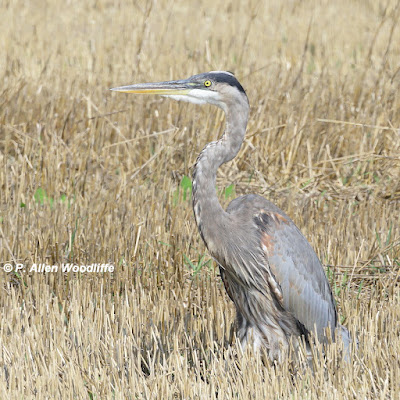There is always something to see, even in the mid-summer heat. I haven't ventured too far, but try and catch up to as many things as I can, all the while being a bit more focused on things to help move my next book project along.
The autumn shorebird migration is well underway, as evidenced by an increase in the species and numbers at sewage lagoons or areas of exposed mudflats. One of the highlights was to see my first of year Stilt Sandpiper....
..and my first of the fall, Pectoral Sandpiper.Both Greater and Lesser Yellowlegs are around, at least in small numbers
 |
| Lesser Yellowlegs |
 | |
| Least Sandpiper |
...and the unspotted young. It is not uncommon to see 30 or more at the lagoons.
Anytime I get close to wetlands, there are some of the larger birds to be seen. None are migrants, yet, and will likely be around for a few months. These all breed in the area, so are just out wandering around feeding, etc.
It is a bit hard to believe that Sandhill Cranes used to be a bit of a rarity, but now you can find them quite regularly, since they have become regular breeders in the larger wetlands. This one was feeding with its mate, in a recently harvested wheat field.
It is the time of year when some of the tallgrass prairie plants are nice and showy, and not always in a prairie. Flowering Spurge, shown first, usually occurs in wide open prairie and savanna sites, but this one was along the more forested Black Oak Trail at Rondeau.
Gray-headed Coneflower is doing well in any kind of a prairie setting, along with its tallgrass prairie companions.
Culver's-root is a rarity of the tallgrass prairies.
While I was on my way to check on the Nodding Pogonia, the endangered orchid that only occurs in Canada at Rondeau, I came across this moth in the grass along the trail. It is a Giant Leopard Moth, and fairly uncommon. I think it is only my second record for Rondeau.
The orchids I was searching for were not out in flower on this visit, but a few days later, found some that had been in flower the day before. The blooms only last for a single day. This photo is from a previous year, and I have been checking up on this orchid in various ways for exactly 50 years! Needless to say I will be out again shortly when the conditions are right for the next blooming period, so stay tuned for an update (hopefully!).With a fair bit of moisture in recent weeks, it bodes well for a good showing of fungi. They are fun to find and photograph, but not as much fun to try and identify. Here are some of the more distinctive or colourful ones I have encountered in recent days. The first ones have not been nailed down as to species quite yet. I often try and photograph the gills on the underside, as they can assist in their identification.
This next one is quite possibly a Lactarious psammicola. I am not aware of a common name.
This next one is probably a Red-mouth Bolete.
And finally, a Yellow Earth Tongue, sometimes called an Orange Earth Tongue, and typically grows out of a mossy log.
If you would like to subscribe, or unsubscribe, to Nature Nuggets, send an email to: prairietramper@gmail.com






















No comments:
Post a Comment